RevenueStory comes with over 150+ ready-made reports and dashboards that helps you derive insights on the New Sales, Payments collected, MRR, Activations, Churn, and so on. Report Builder is a powerful capability that allows you to create your own reports. The information in Chargebee is remodelled as data sources (tables) thereby enabling you to visualize any data that you want as insightful reports. Using this feature, you can transform raw data into actionable insights.
You can create Summary or Detailed Reports using the fields (columns) from different data sources.
The data in Chargebee is remodeled and stored as Data Sources. Data Sources are tables with which you can create reports. Each of these Data Sources has multiple fields (columns).
Chargebee offers the following data sources:
A Detailed Report is a tabular report that contains records at an individual level. You can build it by selecting fields from one or more data sources.
This type of report is most useful when you want to view the underlying data in detail. For example, if you want to list all payment-due invoices by the country or view the active Subscriptions in a particular plan.
Like we discussed earlier, Chargebee has the following data sources that you can use to create this report.
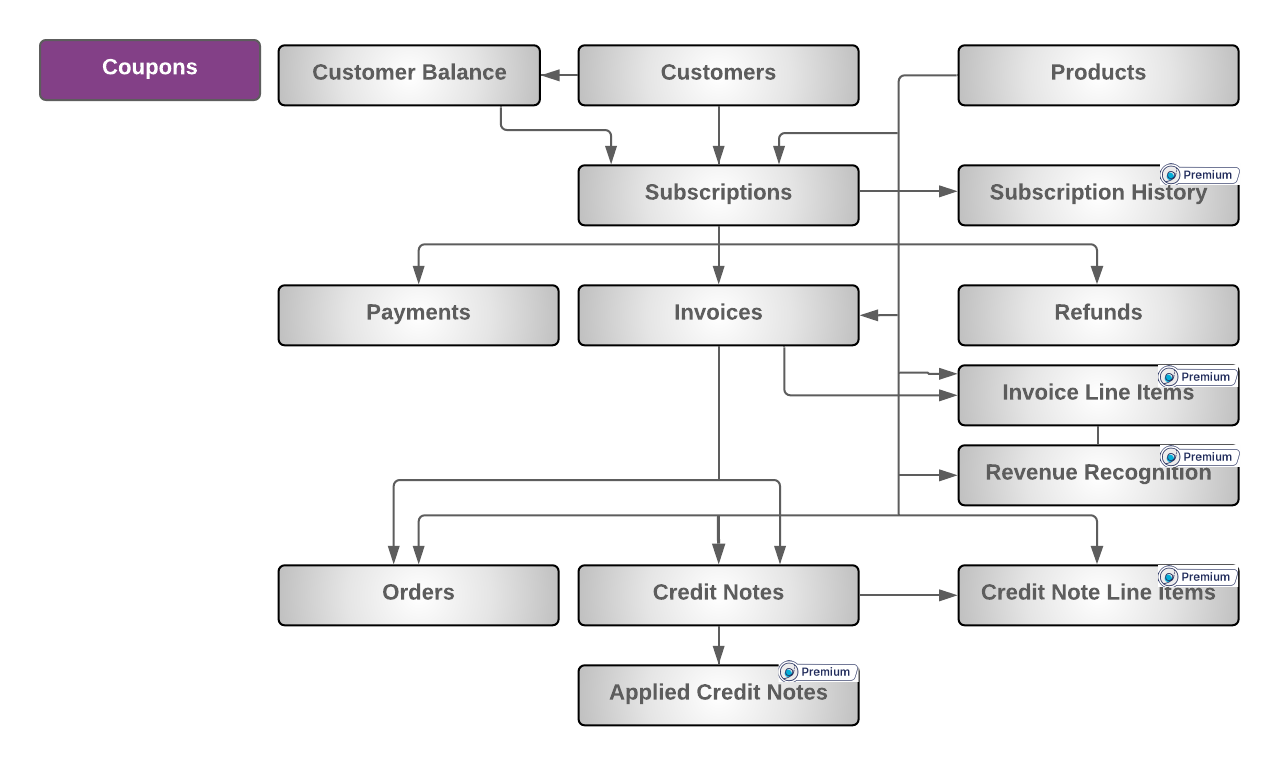
Coupons are not connected with any other data sources. Therefore, you can create reports only by using the corresponding fields.
If you select a data source, then you will be able to additionally select fields from all children and parents of the selected data source. If multiple data sources are selected, then you can only select fields from the common children and all available parents of the selected data sources. Report builder implicitly joins data sources in the background as you go about selecting fields in your report.
Example 1: Let us say that you select Subscriptions as your first data source.
Then, going by our example, you can further select all data sources except Coupons.

If you select Invoices as the next data source then you can additionally select the fields from all data sources except Coupons, Payments, Subscription Histories, and Refunds since they are neither a parent nor a common child of either Subscriptions or Invoices.
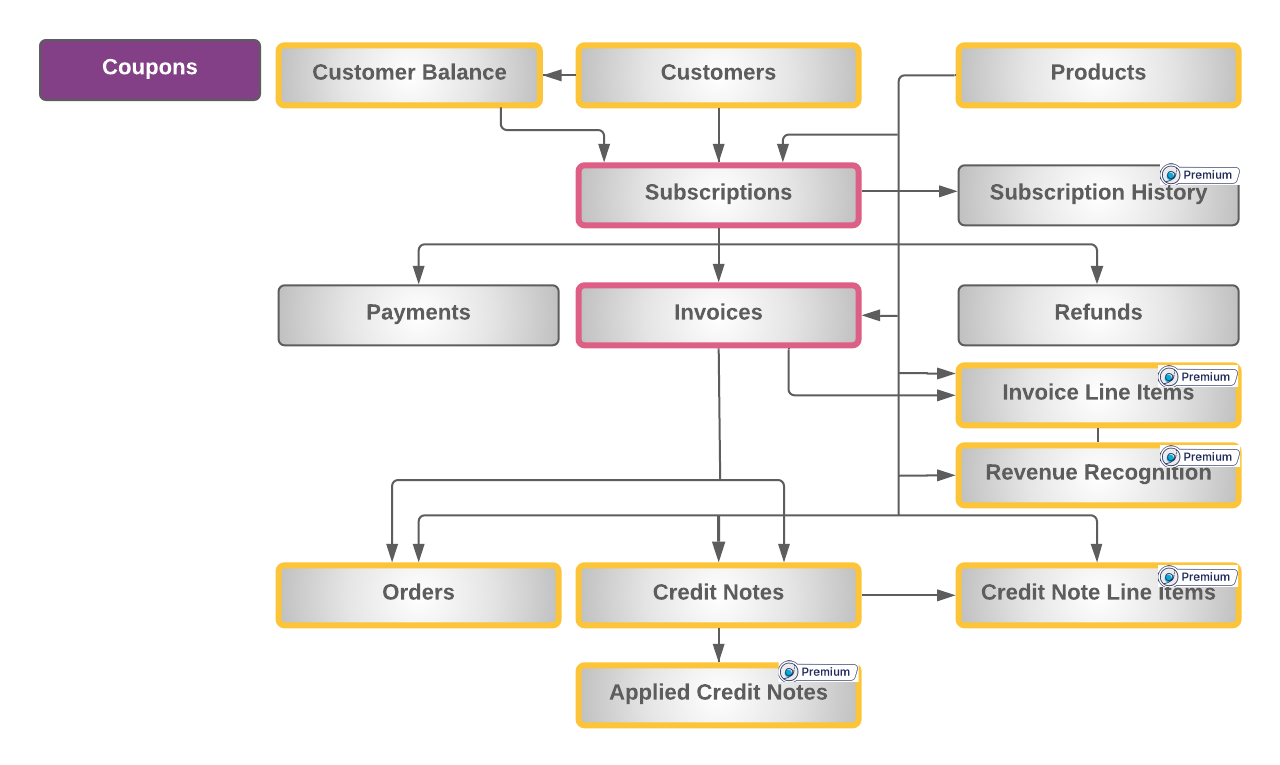
If you select Products as the next data source then you can additionally select the fields from all data sources except Coupons, Payments, Subscription Histories, and Refunds since they are neither a parent nor a common child of either Subscriptions or Invoices or Products.
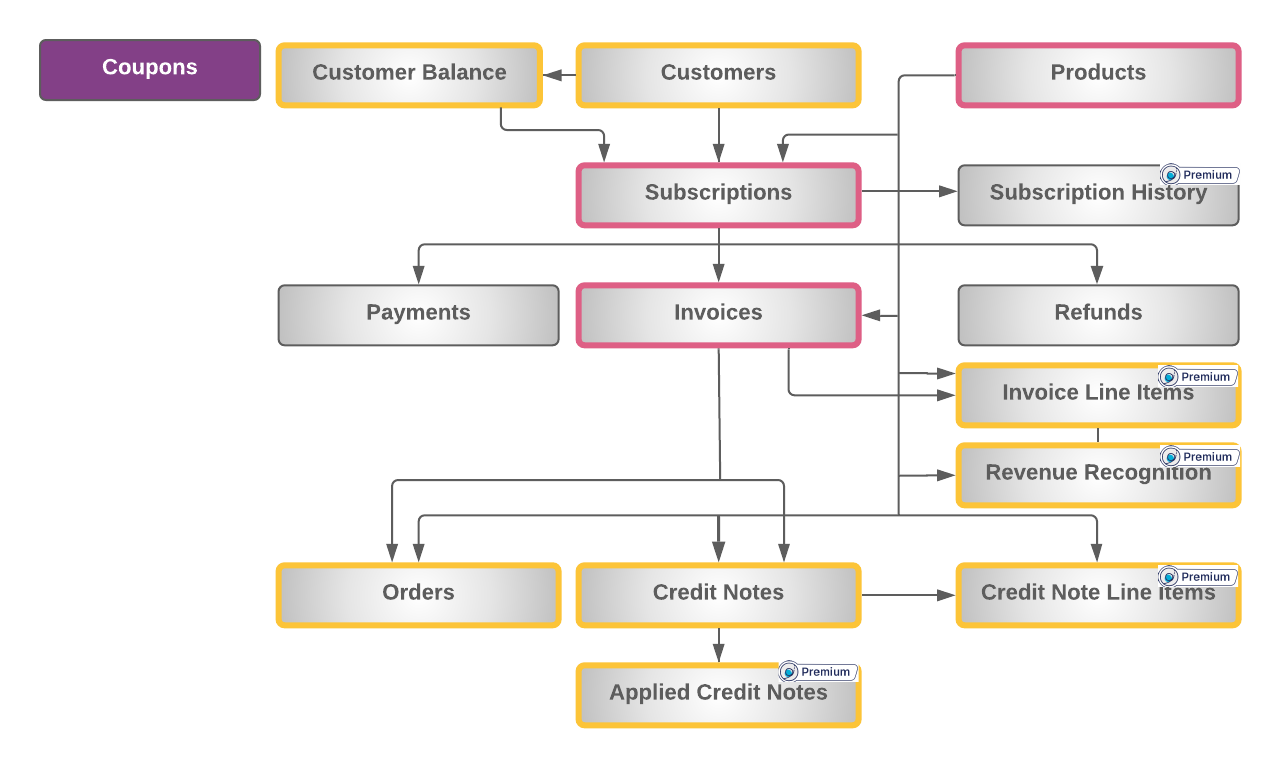
Click RevenueStory > Report Builder.
Choose Create a Detailed Report.

Choose the data sources using which you'd like to create the report. Then, select the fields you need from each of the selected data sources. To build the report shown in our example, select Country from Customers data source, Invoice ID, Due Date, Amount Due, and Status from the Invoices data source, and Subscription ID from Subscriptions data source.

Click Build Report.
Here, we have a report that displays data with different invoice statuses. We need the report to just display "Payment Due" Invoices. We can achieve this using the Filters option. Click Filter and select Invoice Status. Add the filter as shown in the image below and click Add Filter.

This is how the report would look like. The data in the report will be updated when the sync happens (that is, once in 4-5 hours).

A Summary Report is used to provide a concise and high-level overview of the data. In Summary reports the data are grouped by specific attributes (such as status, type etc.) This type of report is extremely useful when you want to look at data by different dimensions to understand trends, anomalies, and so on.
Here is how a Summary Report would look like.

Any Summary Report will have row groups, column groups, and aggregation. You can additionally choose to enable Summary Totals before you build the summary report.
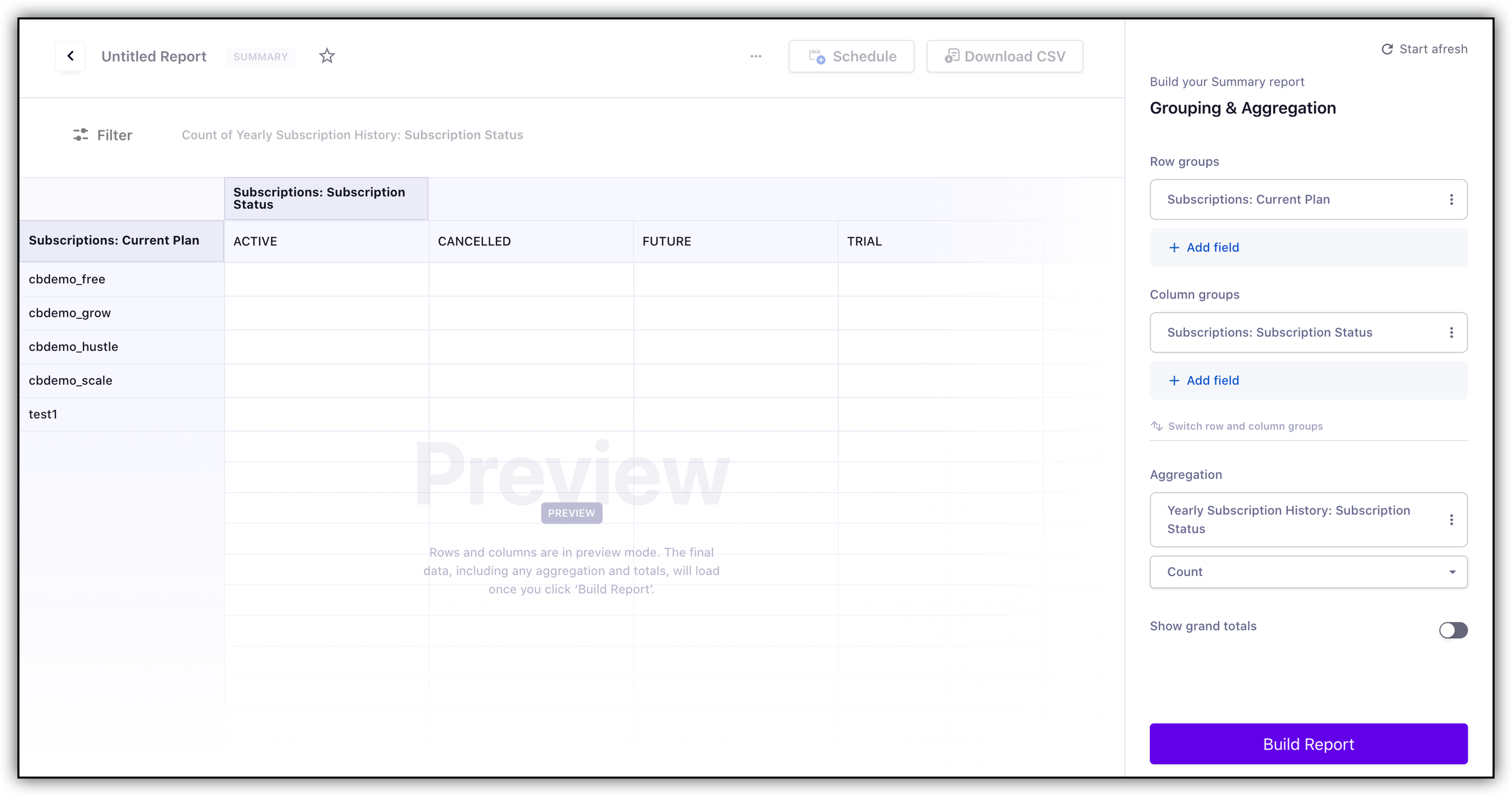
The field selection for row and column groups works similar to that for a detailed report. If you select the fields of any data source as row or column groups, you can go ahead and additionally select the fields of all children and parents of the selected data source. If multiple data sources are selected as row or column groups the fields only from common children and all available parents of the selected data sources are additionally available for adding a column or row group.
You can group the data in the report by columns or rows. It helps in organizing a view for the report.
For example: If you select Invoices as a row header then you can also select the fields from all data sources except Coupons, Payments, Subscription Histories, and Refunds since they are neither a parent nor a common child of either Subscriptions or Invoices.
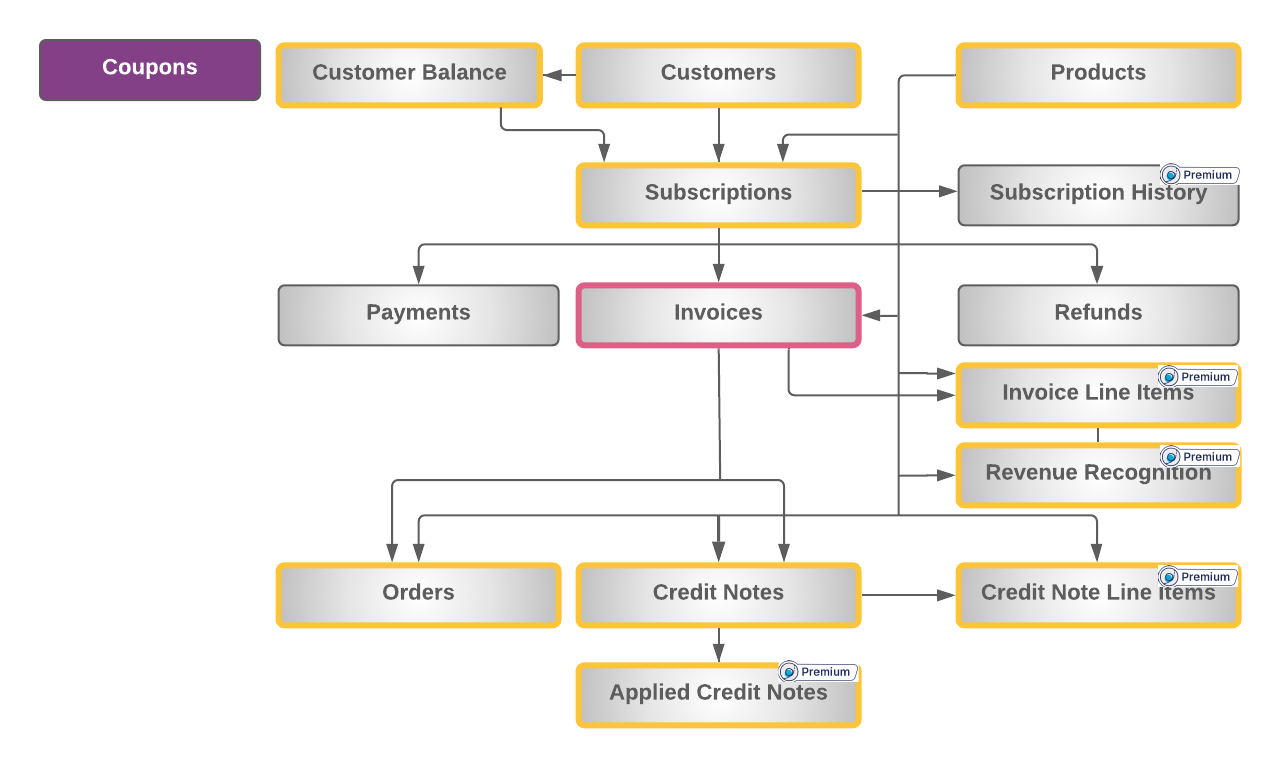
If you select Products as the second row header then you can select fields from all data sources except Coupons, Payments, Subscription Histories, and Refunds since they are neither a parent nor a common child of either Invoices or Products.

Another key aspect of Summary Reports is aggregation. Aggregation is a function where the values of multiple rows are grouped together to form a single summary value. You can apply summary functions such as Sum, Average, Count, Count Distinct, Min, and Max to aggregate the data.
You can only select the common children of the selected data sources in the header groups as the aggregation data source.
In the example below, Revenue Recognition has been selected as a data source for Aggregation.

Click RevenueStory > Report Builder.
Choose Create a Summary Report.

Choose the primary Data Source using which you'd like to create the report. We are going to see how to create a report to view the total number of active, cancelled, paused and trial users in each plan. To do this, select the Subscriptions data source.
Select the Data source and Field for Row and Column grouping. You can select a maximum of 2 rows and 2 columns. Select the subscription status field from the Subscriptions data source for column grouping. And, the current plan field from the subscriptions data source for Row grouping.
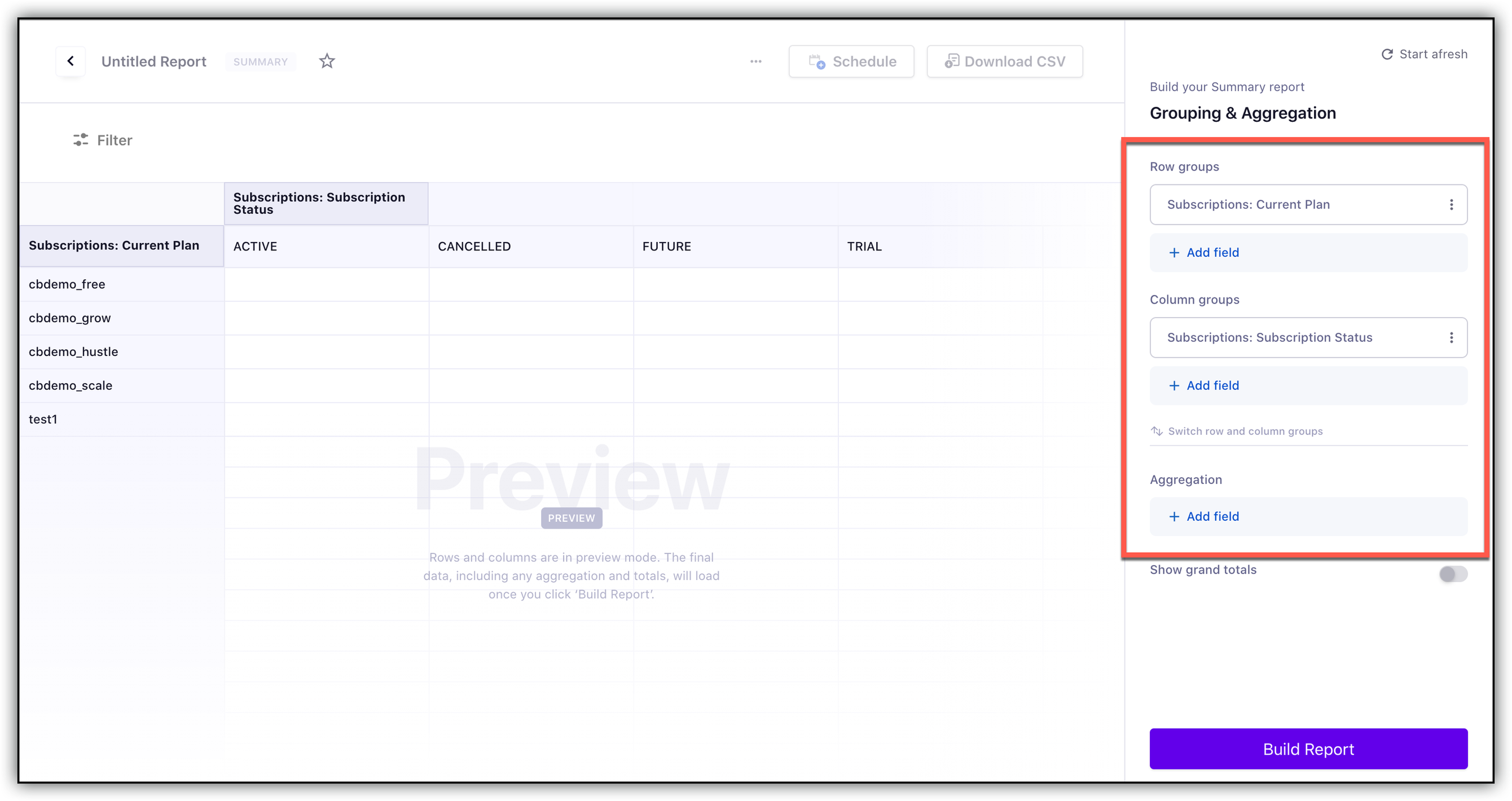
Select the fields from the field dropdown and then select how you want to aggregate the data from the selected field. The operations (aggregation) that can be performed on the selected field will be displayed in the aggregation dropdown. Here, we are applying the count operation on the Subscription ID field (from Subscriptions). Click Build Report.
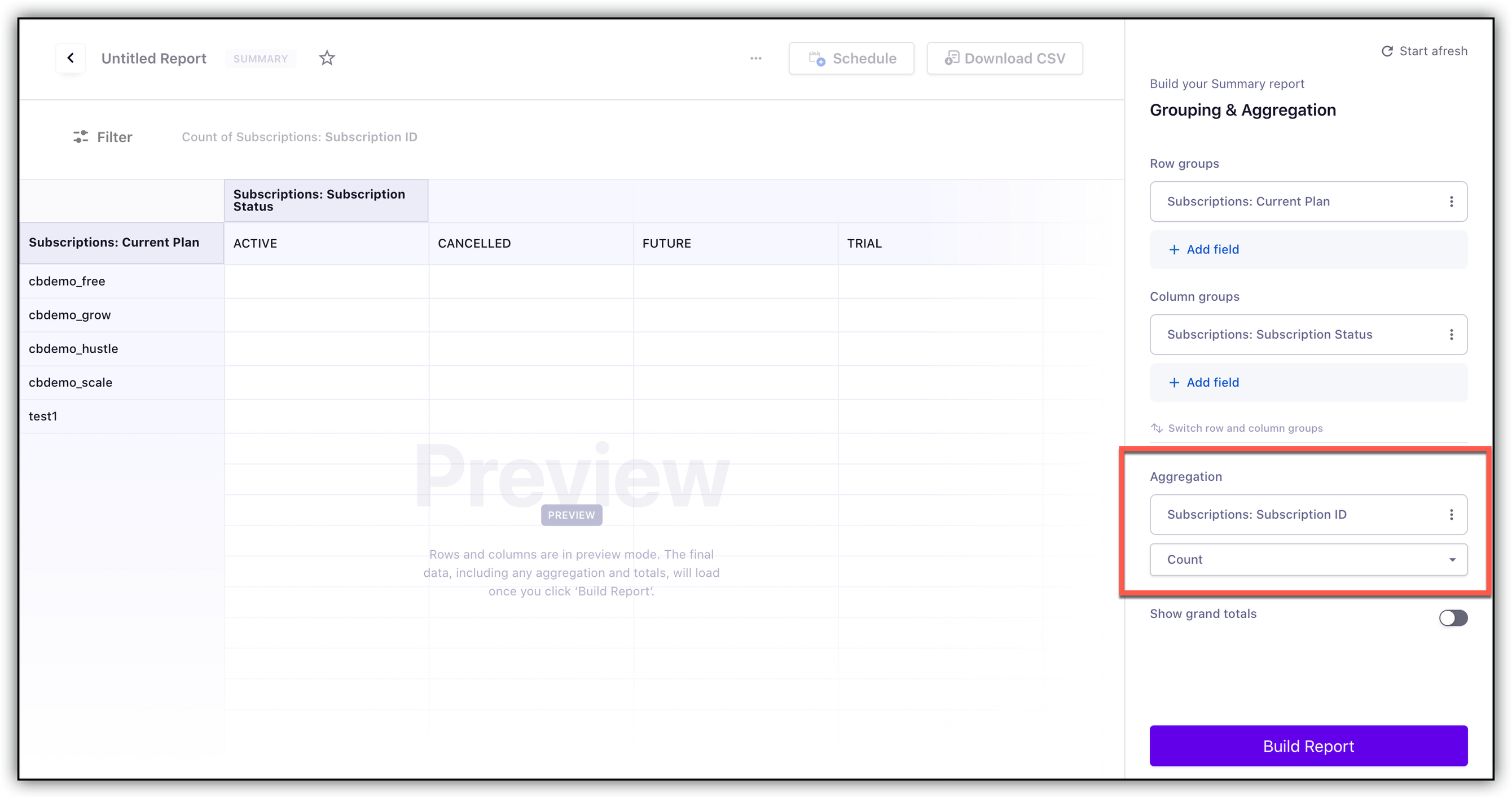
This is how the report would look like. The data in the report will be updated when the sync happens every 2-3 hours. However, delays may occur if a high volume of data sync happens.
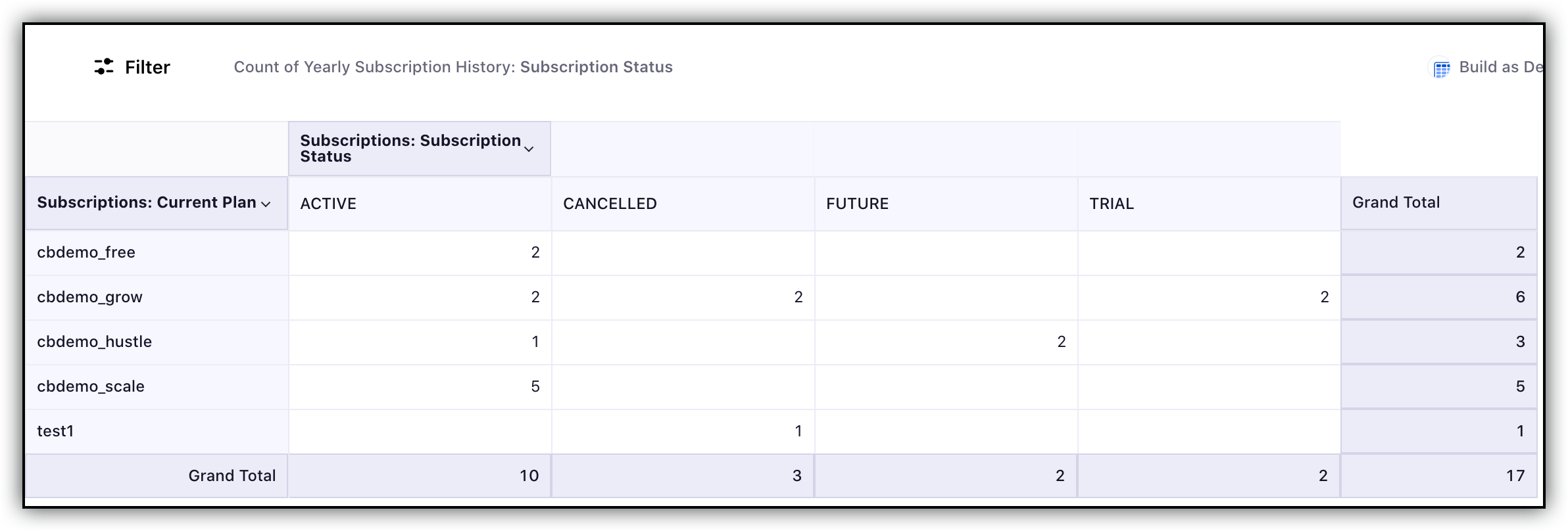
Click here to view more examples of reports created using report builder.